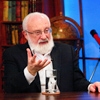Answer: The shattering of the Kelim means a single desire breaking into a multitude of individual desires.
Question: Is there an example of this in our world?
Answer: I doubt it, since even the desires are not very visible to us in this world. I can give you a technical example. Let’s say the engine in my car had been working properly for many years. Suddenly, something happened to it and it fell apart into many different parts that needed to be fixed, tuned, and reconnected.
Question: Kabbalists use language in a very interesting way. You can say “the shattering of the Kelim” or you can say “the sin of Adam.” Are these two different languages?
Answer: Yes. The sin of Adam is the language of the senses and the shattering of the Kelim is the Kabbalistic language or the language of mechanical properties.
Remark: The Kabbalistic language is good insofar as it does not evoke any associations in us, while the word “sin” is associated with so-called sins although, in principle, it has nothing to do with them.
My Comment: Yes, it is. But then, when you delve into the science of Kabbalah and understand how it defines each state, it does not matter how we denote it.
Question: Why didn’t the Kabbalists from the past explain this? Only the most recent Kabbalists Baal HaSulam and Rabash began to explain the Kabbalistic terms.
Answer: The fact is that previous generations were simpler. They were not as confused or full of egoism, nor did they live in such a complex world as we do. Therefore, all of it was clear to them.
[264699]
From KabTV’s “Fundamentals of Kabbalah,” 6/17/19
[264699]
From KabTV’s “Fundamentals of Kabbalah,” 6/17/19


No comments:
Post a Comment